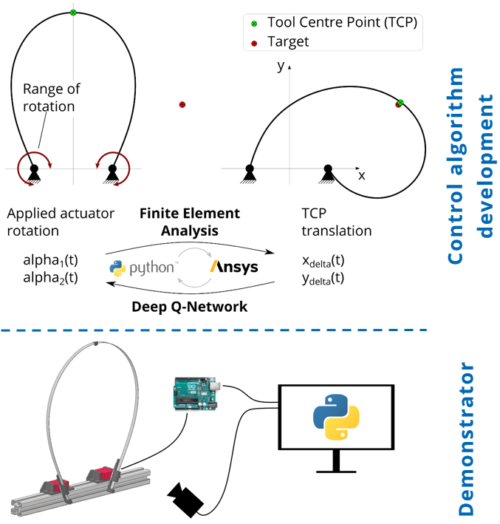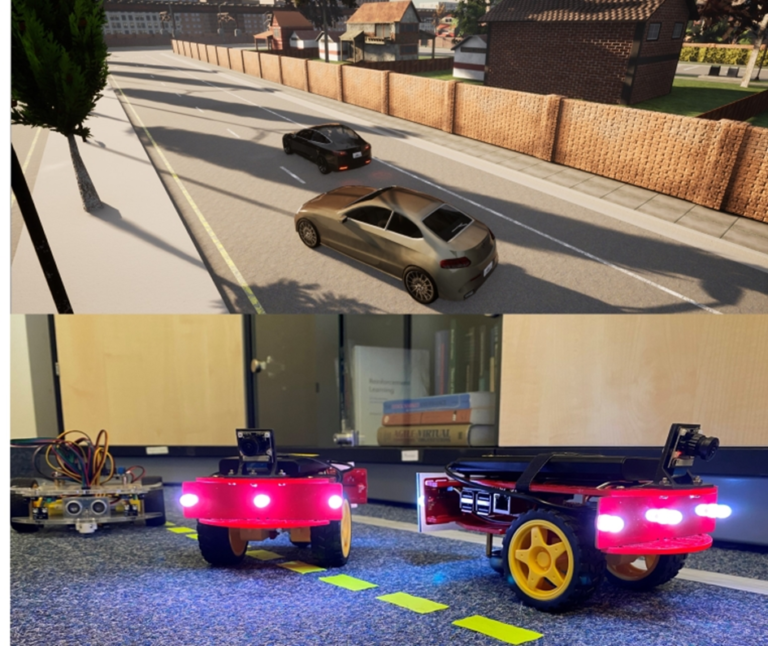Engineering and Business
For future engineering and business applications, Big Data and Artificial Intelligence (AI) are important for mechanical design, maintenance applications, traffic/logistics optimization and planning as well as business data analytics. In engineering and business, Big Data and AI are paramount for business data analytics, business engineering, virtual prototyping, and traffic/logistics optimization and
planning. We focus on intelligent business information systems and AI-based product design.
Research Focus
Lightweight Engineering and Material Design
The process of designing lightweight engineering applications is characterized by highly multi-disciplinary and cross-scale approaches. This fuses aspects of material science, processing technology, experimental mechanics, function integration as well as computational modeling and simulation. However, from a practical engineering and system point of view, this implies highly complex and nonlinear problems with extensive parameters and data spaces. Traditional assessment and handling strategies often result in unexploited engineering potential or even suboptimal solutions. In this respect, methods of Machine Learning (ML) and AI offer unique possibilities to explore, assess and utilize in an advanced manner. Specifically, improved design efficiency, more resilient processes, advanced sensor data analytics as well as utilization of material inherent characteristics to improve weight aspect ratios and resource efficiency are addressed:
- Algorithms and methods for soft robotic components
- Data-driven material modeling for more efficient cross-scale structural evaluation using surrogate data derived from Representative Volume Elements,
- Sensor development, data interpretation, and calibration for structural health monitoring and predictive maintenance,
- Manufacturing process monitoring, digitally linked material development processes,
- Image analysis for defect detection in shearographic images and CT data.
Control algorithms development for soft robotic components based on virtual prototyping

Traffic modeling and autonomous driving
We aim at developing a powerful tool that simulates vehicle behavior in the line and mixed traffic, using reinforcement learning of the hierarchical deep networks and embedding it into real vehicles. The training process concentrates on the lateral and longitudinal movements, correct behaviors on the columns, natural moves in the free and stop-and-go traffic, foreseen overtakes, etc. The derived model will be extended to the self-learning process of the development of roads, traffic lights, and complete traffic infrastructure and transferred into a physical demonstrator driven by the developed models.
Exemplarily, deep reinforcement learning (DRL) has been used for autonomous vessel movement with DRL controllers, where behavioral policies are considered which are capable to follow arbitrary paths on restricted waterways under the influence of varying environmental conditions such as changing water depths and high current velocities including cross-current situations. Also, DRL agents are trained in a simulated environment for vehicles in a way that the driving policy of the agent is able to guide the vehicle to maintain its performance in the real-world environment robustly and master different driving tasks, such as lane following and overtaking.

Business engineering
Previous work includes research activities in the area of process mining. In particular, deep learning methods (Recurrent Neural Networks, Variational Autoencoders, Attention Mechanisms) were investigated and developed to monitor and classify infrequent behavior in business processes. Transitioning into the area of business engineering, the collected knowledge from the development of deep learning approaches can be applied further.
For this purpose, common deep learning architectures that are based on intuitive, fast and unconscious data processing (system 1) will be transferred into a system (system 2) that is based on logical, sequential data processing and conscious reasoning. Connecting these two systems is possible by using attention mechanisms (e.g., Self-Attention, Multi-Head Attention), which allows for focused and conscious data processing. The focus of system 2 in the area of business engineering lies in the guidance of superordinate business rules, which result from different components (processes, systems, strategies). The vision of this approach is to enhance existing or to create new methods and concepts to achieve robust, intelligent business processes and more resilient business systems in the future.
Aims
- Development of AI/Machine Learning methods for sensor development and calibration, for measurement data interpretation and for evaluating the results of imaging measurement methods
- Process modelling, analysis, control and applied big data and AI monitoring
- how parameterized FE models (virtual entities) can be used to generate training data for AI/Machine Learning methods to evaluate physical components (real entities)
- Identification of material parameters and purely data-driven material models for efficient cross-scale structural evaluation
- In the field of traffic modelling: behavior of vehicles in scheduled and mixed traffic with the help of reinforcement learning of hierarchical deep networks
- Extension of traditional methods based on new reusable patterns defined in the form of business rules
- Development of new AI/Machine Learning architectures





